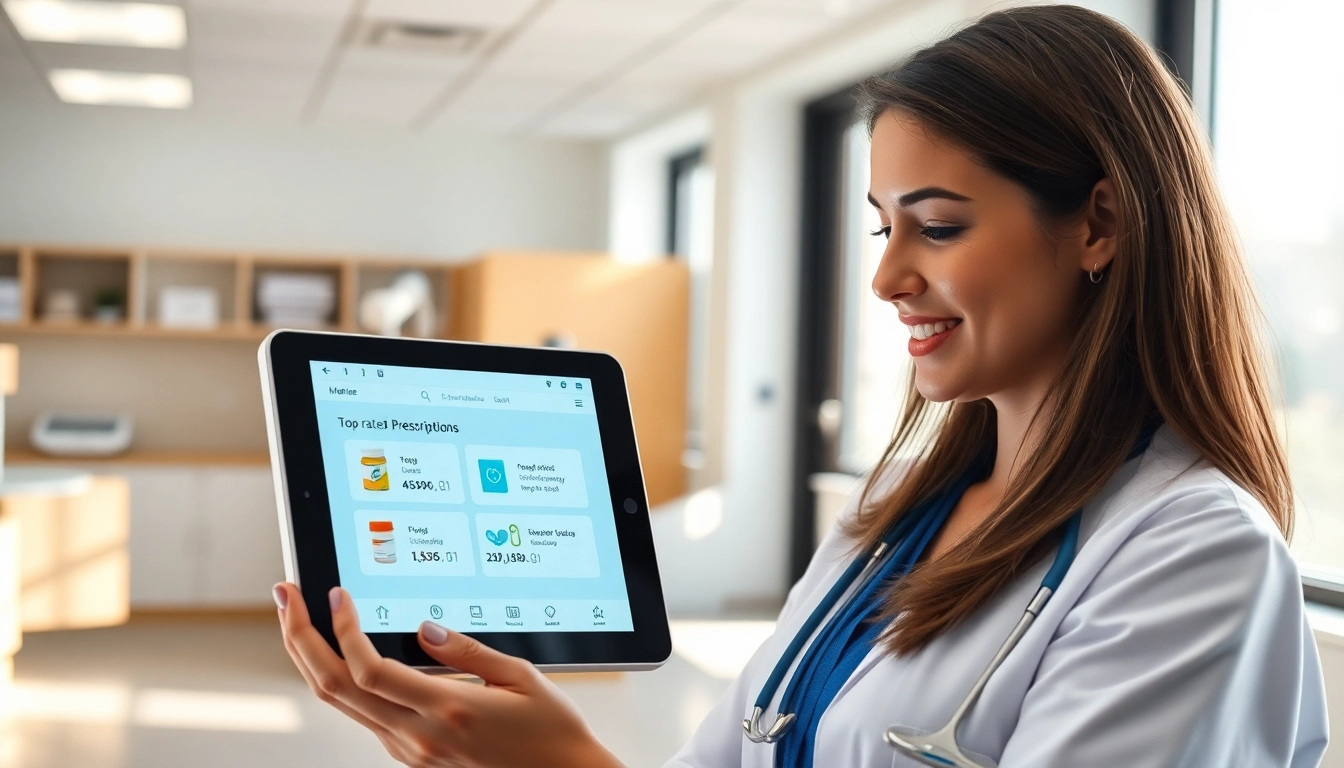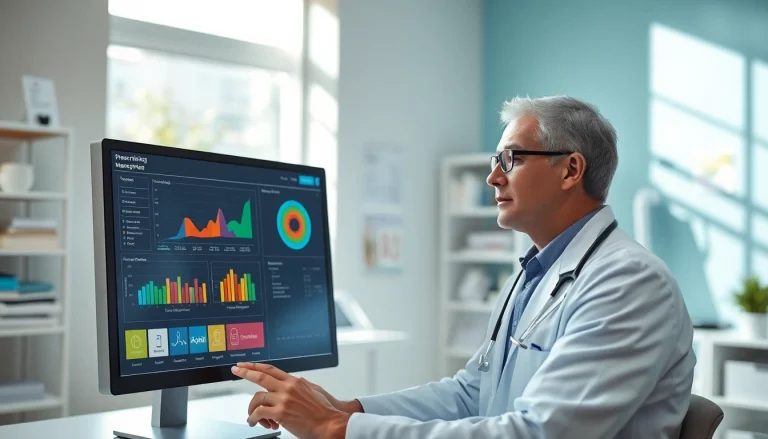Understanding Top Rated Prescription Applications
In today’s digital era, healthcare solutions have increasingly shifted towards technology, offering both patients and providers enhanced experiences. One of the standout advancements in this domain is the rise of prescription applications. These tools not only facilitate the management of prescriptions but also improve overall healthcare delivery. Moreover, with the myriad of options available, identifying the top rated prescription applications becomes paramount for all stakeholders involved.
What Are Prescription Applications?
Prescription applications are mobile or web-based tools that allow healthcare providers to manage, prescribe, and monitor medications electronically. They often encompass functionalities including writing and sending prescriptions directly to pharmacies, tracking patient medication histories, and offering reminders for medication refills. These applications are designed to simplify the prescription process, cut down on errors, and enhance communication between patients and healthcare professionals.
The Importance of Top Rated Prescription Applications
Choosing reputable and highly rated prescription applications significantly impacts patient outcomes and the efficiency of healthcare delivery. Top rated applications are endorsed for their reliability, ease of use, and comprehensive features. They not only ensure the proper dispensing of medications but also contribute to better adherence to treatment plans and improved patient satisfaction. As healthcare moves towards a more collaborative and patient-centric model, these applications are increasingly vital in bridging gaps between patients and providers.
Key Features to Look For
When selecting prescription applications, it’s essential to consider specific features that not only meet the immediate needs but also foster long-term benefits. Key features include:
- Prescription Management: The ability to quickly write, edit, and send prescriptions securely to pharmacies.
- User-Friendly Interface: A straightforward design that caters to both healthcare professionals and patients, ensuring ease of navigation and usage.
- Patient Tracking: Features that allow monitoring of patient medication adherence and history.
- Integration Capabilities: Compatibility with other healthcare systems and electronic health records (EHR).
- Real-Time Updates: Notifications about drug interactions, allergy alerts, and changes to medication guidelines.
How to Choose the Best Prescription Applications
Choosing the ideal prescription application involves several evaluations and considerations that align with specific healthcare needs. Here are the primary areas of focus when making your selection:
Evaluate User Interface and Experience
An intuitive user interface (UI) can greatly enhance the experience of both providers and patients. When evaluating applications, look for clear navigation, accessible features, and instruction materials to aid in usage. A positive user experience not only reduces training time but also increases the likelihood of regular usage among healthcare professionals and patients alike.
Assess Security and Compliance Standards
Healthcare data is subject to strict regulations, making security a non-negotiable feature when choosing prescription applications. Ensure that the application complies with health data regulations such as HIPAA to protect patient information from breaches and unauthorized access. Look for applications that offer advanced security features like encryption, two-factor authentication, and regular security audits.
Consider Integration with Existing Systems
It is vital that any new prescription application integrates seamlessly with current healthcare systems, such as EHRs and practice management software. The ability to connect and share data across platforms eliminates redundancy, reduces errors, and saves time. A well-integrated system enhances workflow efficiency and provides healthcare teams with a comprehensive view of patient health.
Benefits of Utilizing Top Rated Prescription Applications
Implementing high-quality prescription applications can offer numerous advantages that can fundamentally transform healthcare delivery. Here are a few notable benefits:
Improved Patient Compliance and Engagement
One of the primary challenges in healthcare is ensuring that patients adhere to prescribed treatment plans. Top rated prescription applications often include features that engage patients effectively. Reminders for medication times, refill alerts, and educational resources about the importance of medication adherence can significantly enhance patient compliance.
Streamlined Prescription Management
The process of managing prescriptions can be cumbersome, especially when dealing with large patient populations. Prescription applications streamline this process, enabling healthcare providers to manage prescriptions efficiently. Automated refills, electronic signatures, and immediate updates on patient medication history simplify workflows, allowing providers to spend more time on patient care rather than administrative tasks.
Enhanced Communication Between Patients and Providers
Communication is fundamental in healthcare. Top rated prescription applications facilitate real-time communication between patients and providers, enabling rapid exchanges of information. This interaction can lead to quicker resolutions of queries and concerns, ensuring that patients feel supported throughout their treatment journey.
Challenges in Implementing Prescription Applications
Despite the myriad benefits of prescription applications, their implementation does not come without challenges. Here are some potential hurdles that healthcare providers may face:
Training Staff on New Technologies
Adopting new technology often requires staff to undergo training, which can be a significant barrier to implementation. Ensuring that all users are adequately trained on how to use the applications is crucial. Providing thorough training sessions, ongoing support, and easy-to-access resources can help make the transition smoother and more efficient.
Navigating Privacy Regulations
Managing patient data comes with strict regulatory requirements. Understanding and navigating these regulations can complicate the implementation process. Ensuring that the chosen applications adhere to privacy guidelines, including extensive training on data management and compliance, is essential to mitigate risks associated with data breaches.
Addressing Technical Issues and System Downtime
Like any technology, prescription applications may occasionally face technical issues or downtime that can impede their functionality. It is vital to have a reliable IT support system in place to address these challenges quickly. Regular maintenance and updates, combined with clear communication regarding downtime to users, can enhance the overall experience.
Measuring Effectiveness of Prescription Applications
Once prescription applications are implemented, measuring their effectiveness is necessary to ensure they meet the intended goals. Evaluating their performance helps determine areas for improvement and enhances their impact on patient care.
Key Performance Indicators to Monitor
Tracking specific key performance indicators (KPIs) allows healthcare providers to assess the effectiveness of their prescription applications. Relevant KPIs might include:
- Medication adherence rates among patients.
- Number of prescription errors reported.
- Time taken from prescription generation to fulfillment at pharmacy.
- Patient satisfaction scores reflecting user experience.
Gathering Patient Feedback
Patient feedback is invaluable for understanding the user experience and effectiveness of prescription applications. Surveys, interviews, and focus groups can provide insights into how well the application serves patients and areas that require adjustments. Engaging with patients and incorporating their feedback fosters a culture of continuous improvement.
Adjusting to Improve User Satisfaction
After gathering performance data and patient feedback, making necessary adjustments to enhance the application’s usability is essential. This can involve refining features, addressing any frequently reported issues, or enhancing interface designs to improve navigation. Proactively making changes based on user input will not only improve satisfaction but also cultivate loyalty among users.








